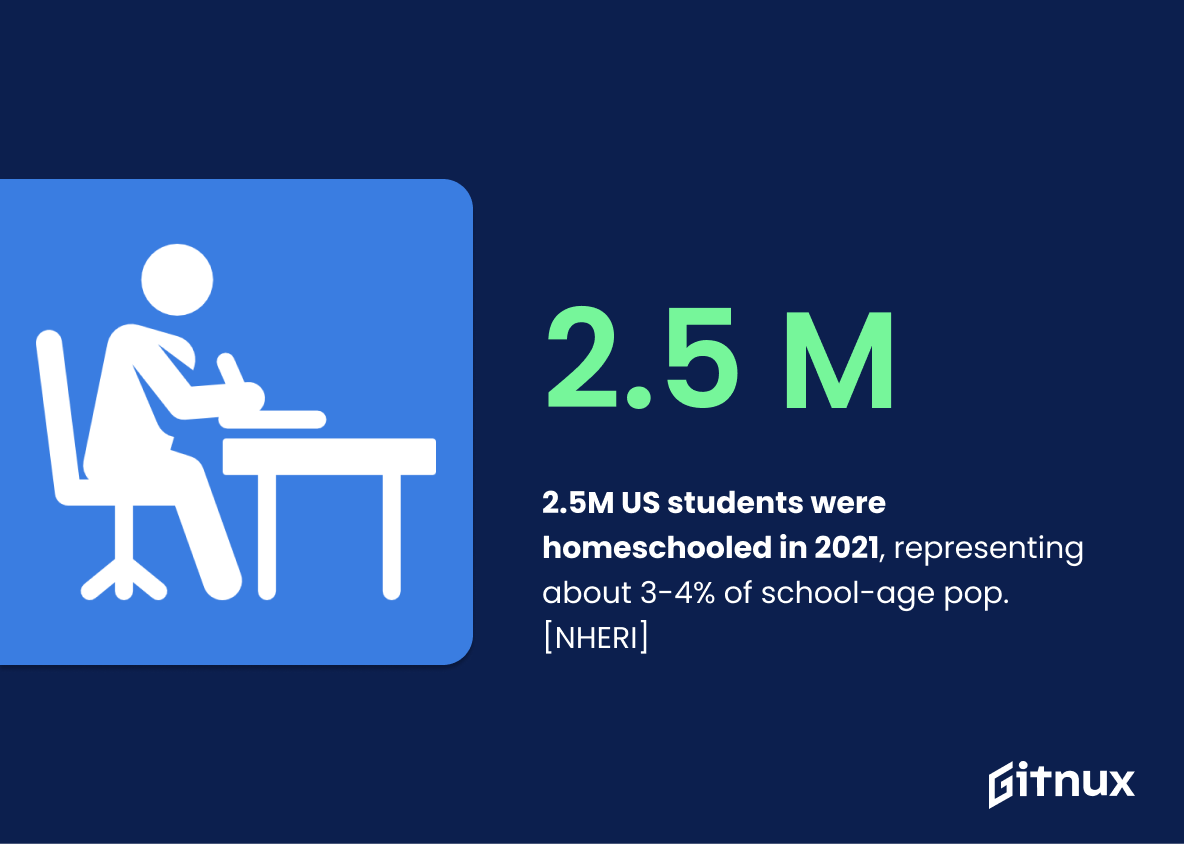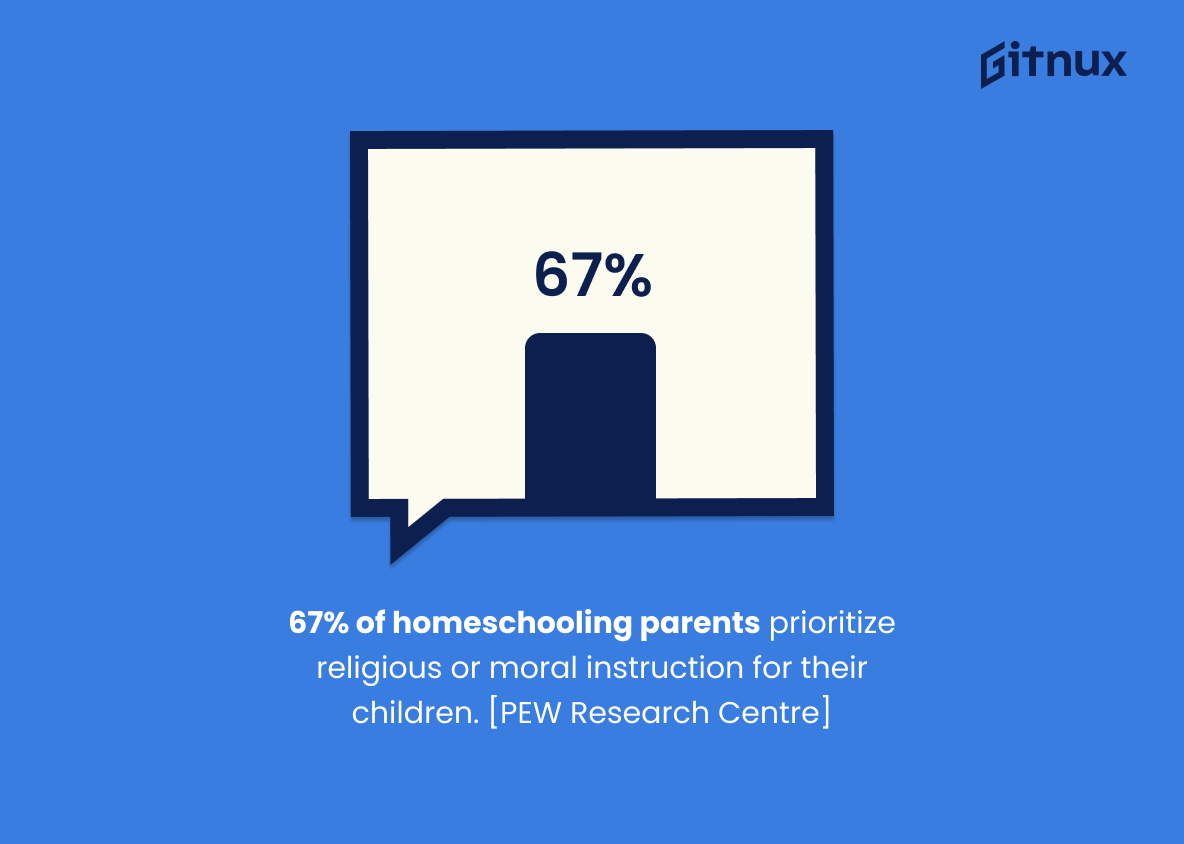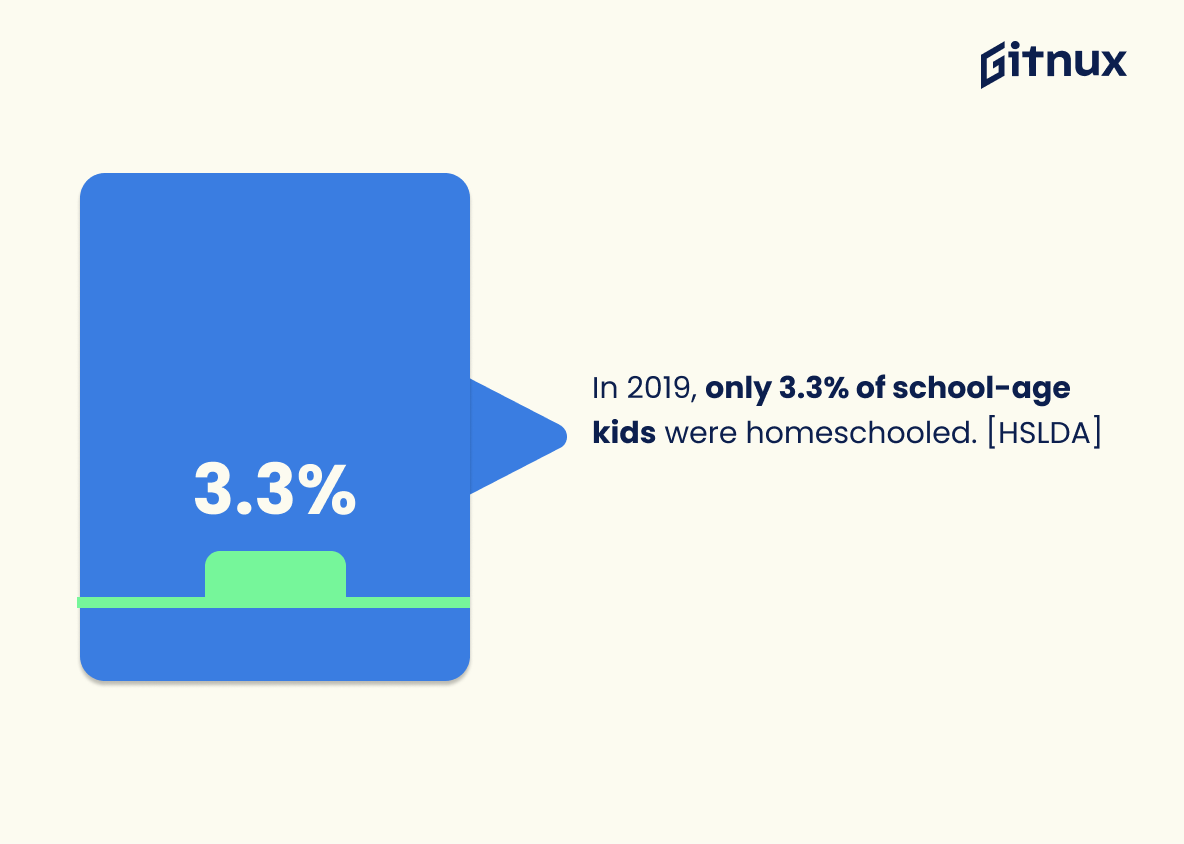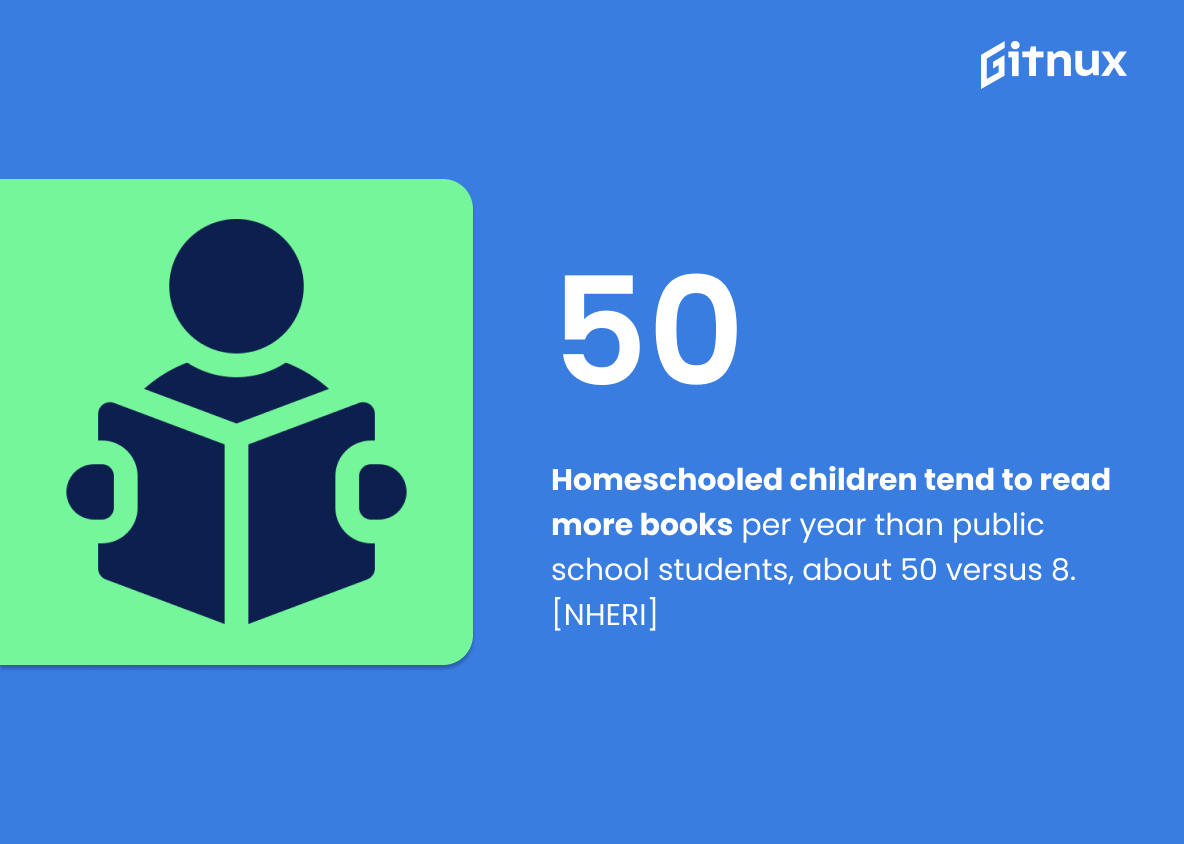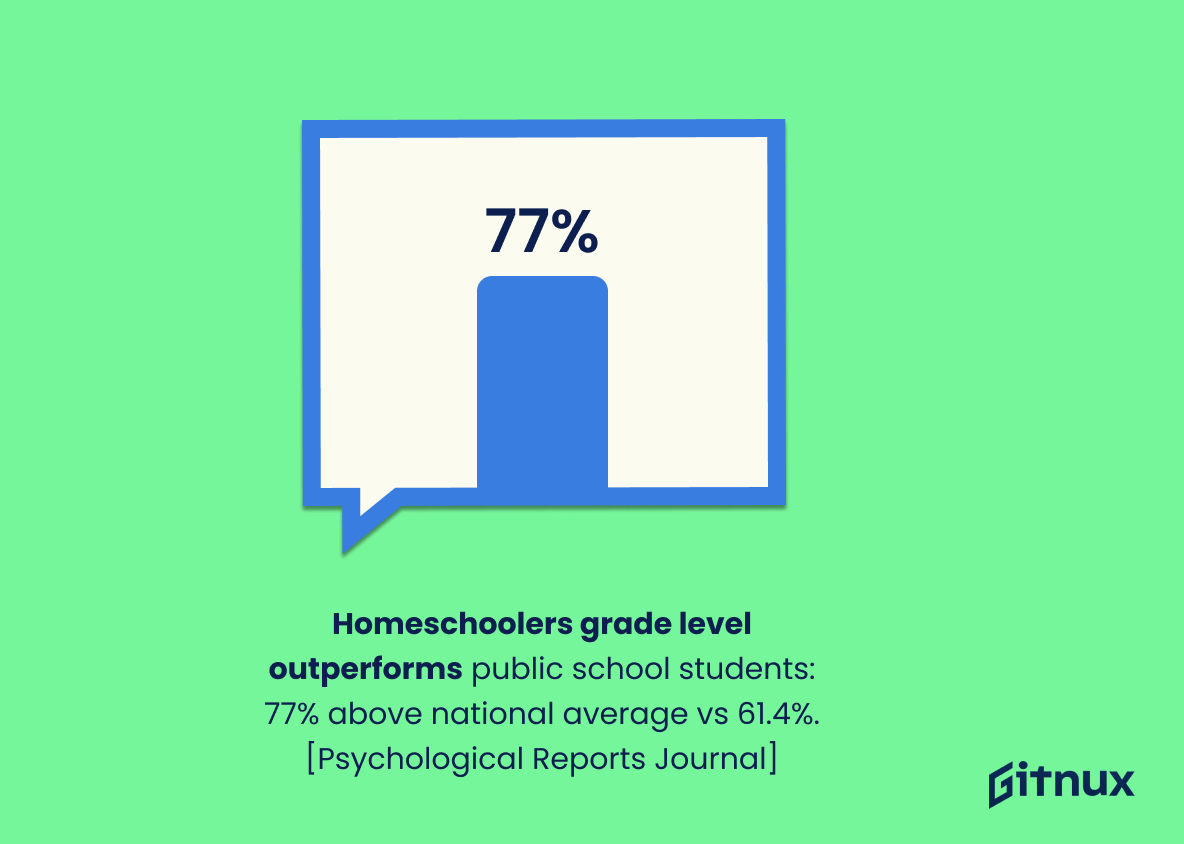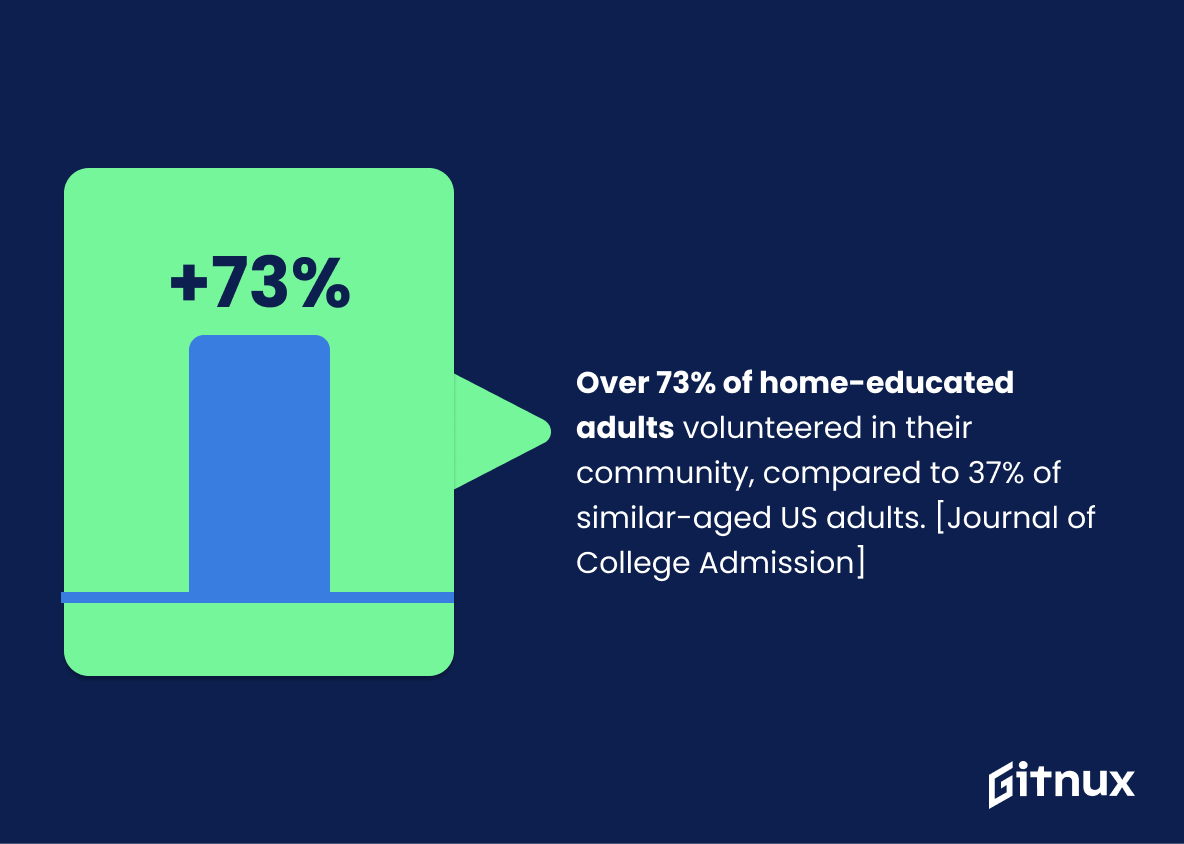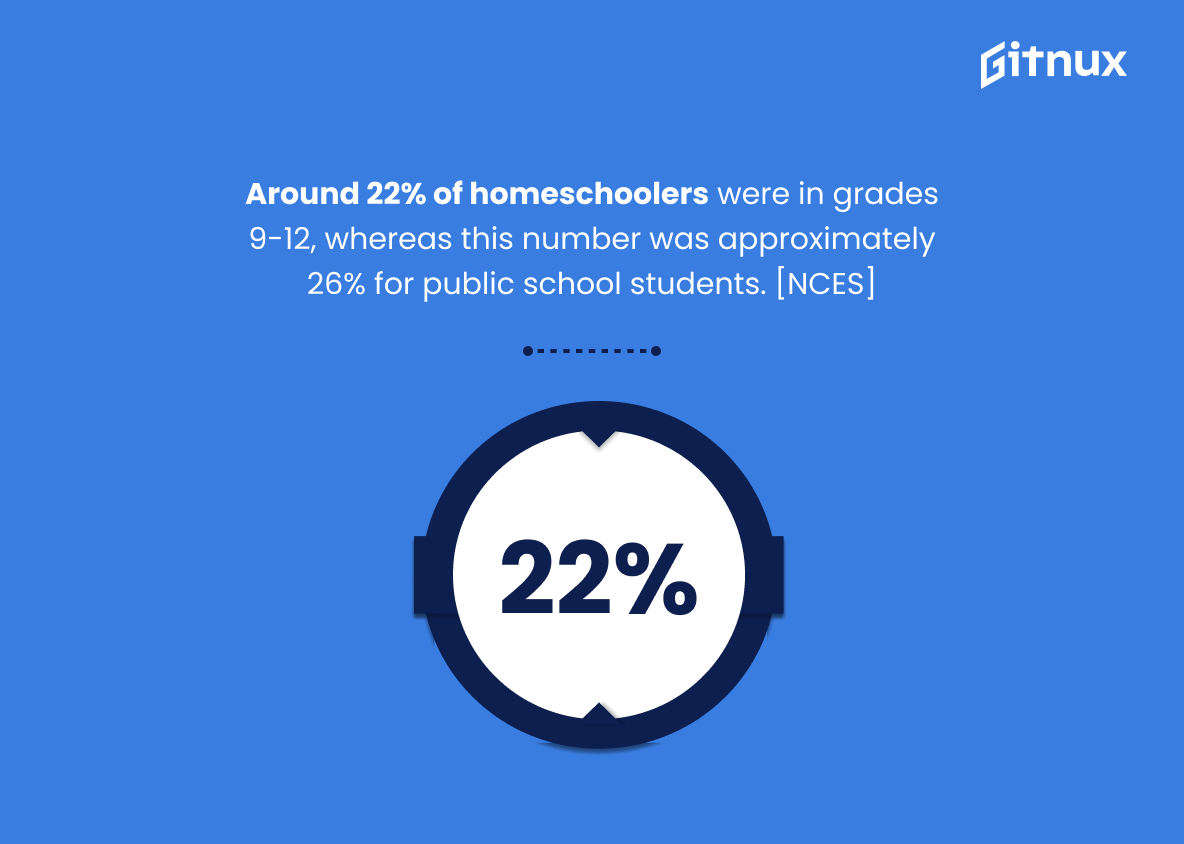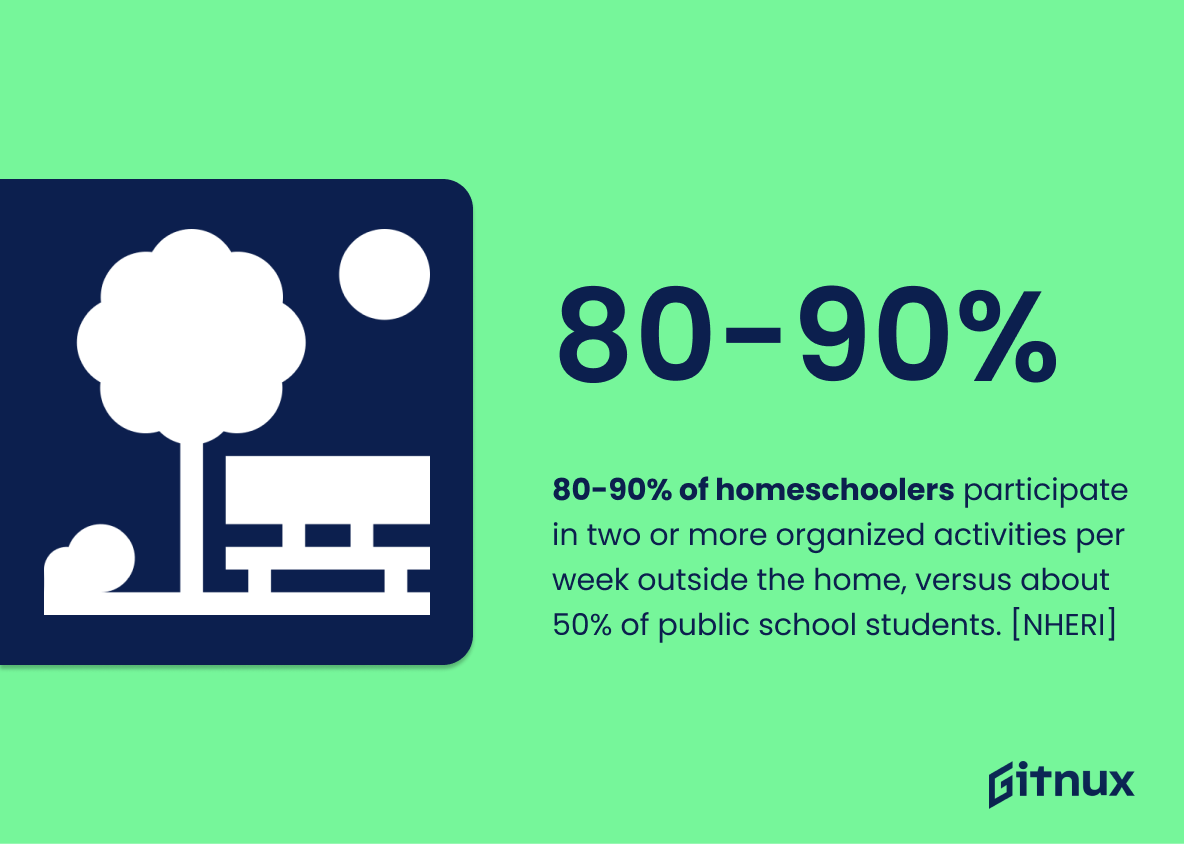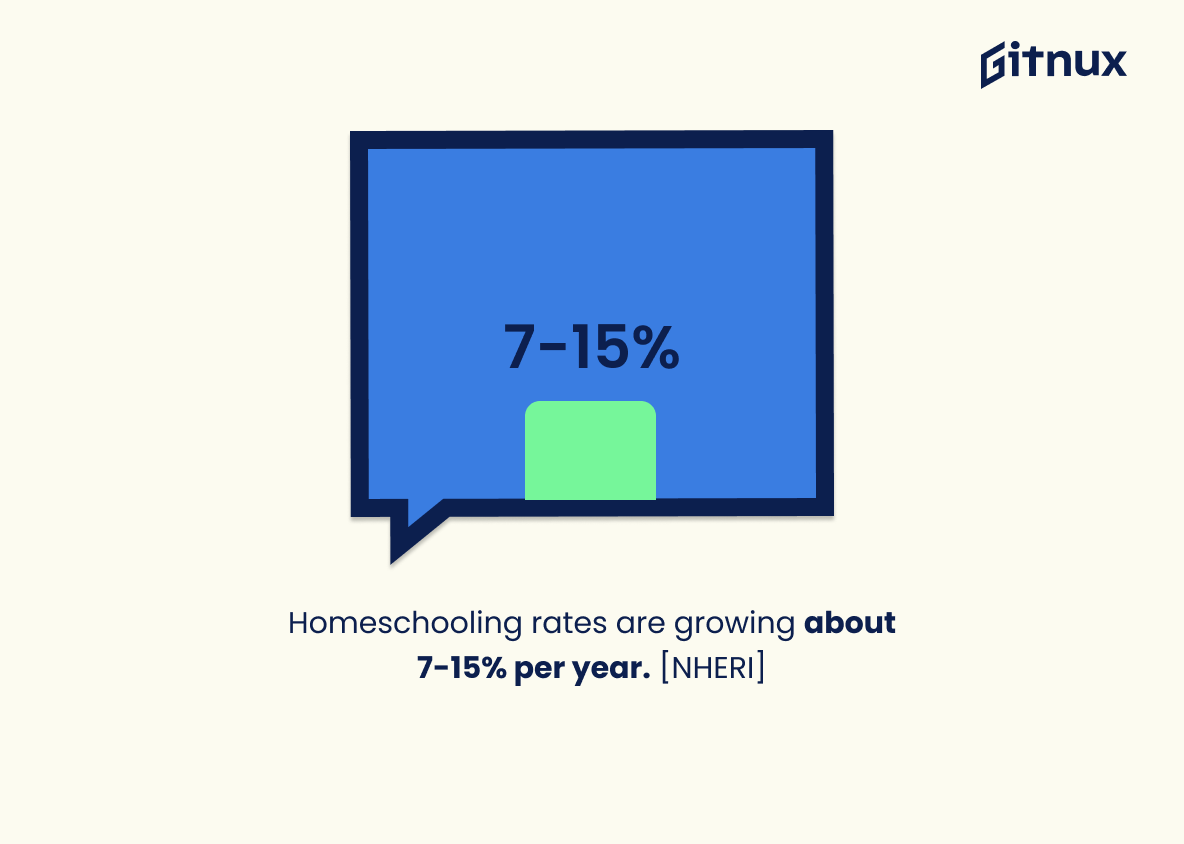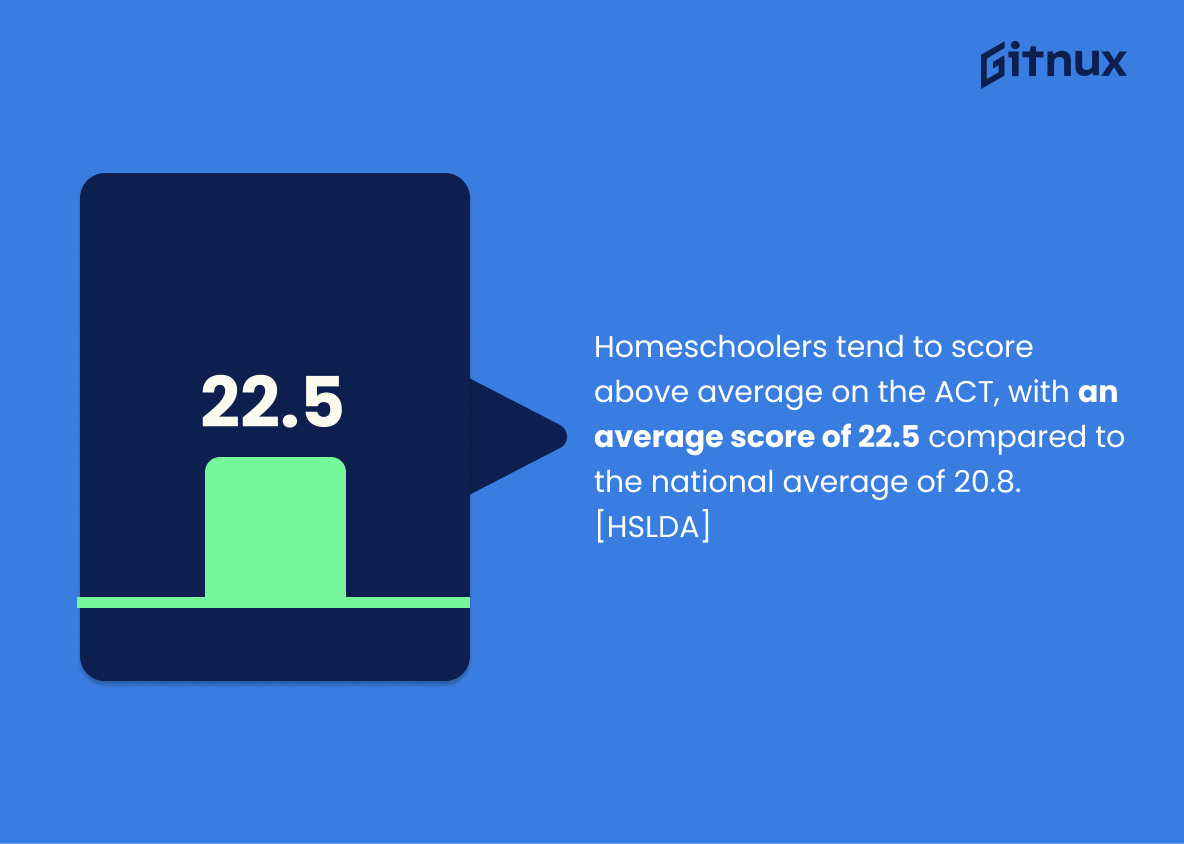As the landscape of education continually shifts, two alternatives stand out from the conventional route: homeschooling and public education. Choosing the best educational path for your child is an important decision filled with many considerations. The ever-rising question of ‘homeschooling versus public schooling’ sparks heated debate amongst parents and educators alike. In this blog post, we’ll delve into telling statistical data, analyzing the key standpoints and performance trends of both homeschooling and public education students. These statistics will shed light on distinct aspects of each learning environment, paving the way for you to make a well-informed decision when it comes to your child’s education. Let’s dive into the compelling world of homeschooling versus public education statistics.
The Latest Homeschooling Vs Public Education Statistics Unveiled
Approximately 2.5 million students were homeschooled as of 2021 in the U.S., representing about 3-4% of the total school-age population. [NHERI]
Grasping the homeschooling landscape, this statistic serves as a compass, guiding us to understand its scale in the vast ocean of the American educational system. With around 2.5 million homeschooled students as of 2021, the path less travelled by indeed resonates with a substantial fraction – 3-4% – of the country’s school-age population. Within a blog post comparing homeschooling and public education, this enumeration provides a foundational mark to gauge the prevalence and acceptance of non-traditional learning pathways. Comparing this figure with those from public schools could also spark intriguing discussions about educational outcomes and parental choices. It stands as a testament to the evolving tides in the ocean of education, lighting the way for future investigations into the reasons, methods, and outcomes of homeschooling versus public schooling.
67% of parents who homeschool their kids do so to ensure their child gets religious or moral instruction. [PEW Research Centre]
Navigating the waters of the Homeschooling Vs Public Education discussion, this aforementioned statistic serves as a beacon of light into the motivations of homeschooling parents. Astonishingly, it shows that the majority (67%) of parents who elect for homeschooling don’t primarily do so for academic reasons – as many might assume. Instead, it is the desire for their children to receive religious or moral instruction that drives them to take education into their own hands. This finding from the esteemed Pew Research Centre puts a different spin on the homeschooling discourse, highlighting the vital role individual beliefs and moral values play in shaping educational choices. Therefore, this revelation cannot be overlooked when comparing and contrasting homeschooling and public education.
Homeschooled students, on average, score 15 to 30 percentile points above public school students on standardized academic achievement tests. [NHERI]
In the riveting battle of Homeschooling Vs Public Education Statistics, this particular finding serves as a major tipping point. Delving into the heart of academic achievement, it unveils a compelling edge for homeschooled students. The staggered 15 to 30 percentile point lead that they hold over their public-school peers on standardized tests is a revelation to any education-focused discussion. This disparity fuels the argument that students nurtured in the comfortable cocoon of home education may indeed fare better academically. A ponder-worthy point it is, influencing conversations around the effectiveness of instructional settings, thus adding an intriguing, data-driven twist to our Homeschooling Vs Public Education debate.
In 2019, only 3.3% of school-age kids were homeschooled. [HSLDA]
Unfolding the value behind this stat, it frames the context about how non-traditional education, in this case homeschooling, might seemingly hold a minority stake in the educational scene, accounting for just 3.3% of school-age kids in 2019. Yet, this data may serve as an important flashpoint to spark conversations around homeschooling and public education comparison, underscoring the need to perhaps scrutinize why the majority have continued with public education or explore the obstacles that prevent a larger population from adopting homeschooling. Furthermore, it establishes a solid baseline to track trends and changes in the homeschooling landscape over time, allowing us to ascertain whether it’s experiencing a surge or decline year-on-year. A comprehensive study of this percentage could help us cut through the biases and reveal the true merits and demerits of homeschooling relative to a conventional educational setup.
Homeschooled children tend to have higher SAT score averages, 1238 homeschooled versus 1055 public school. [Academic Leadership Journal in Student Research]
In exploring comparisons between homeschooling and public education, a prominent consideration is the academic performance of the students, with SAT scores serving as an objective measure of this. The statistic highlighting the higher SAT score averages of homeschooled students, specifically 1238 compared to 1055 of public school, offers a significant revelation in the debate. This finding, identified by the Academic Leadership Journal in Student Research, serves as an impactful pivot point in the discourse, casting a highly favorable light on homeschooling. It underscores the potential of homeschooling to foster an academic environment in which learners can potentially thrive beyond their publicly-schooled counterparts. Furthermore, it ignites a compelling conversation around the factors fueling this achievement disparity; such as customization of learning, better focus, or a more supportive one-on-one setting offered by homeschooling, thereby validating its efficacy as a viable alternative educational route.
Homeschooled children tend to read more books per year than public school students, about 50 versus 8. [NHERI]
In painting a comprehensive picture of the homeschooling versus public education debate, this intriguing statistic brings to light an integral aspect of private learning – the propensity for homeschooled children to be more voracious readers. With an impressive count of 50 books per annum compared to their public school counterparts’ 8, this stark contrast may point towards a significant edge that homeschooling has in cultivating literacy and fostering inquisitiveness among learners. It’s a vibrant thread woven into the fabric of homeschooling benefits, possibly leading to enhanced cognitive skills, improved vocabulary, and a more profound understanding of diverse topics.
77% of homeschoolers had a grade level that was above the national average, compared with only 61.4% of public school students. [Psychological Reports Journal]
Delving into the debate surrounding homeschooling versus public education, one cannot ignore the compelling statistic reported in the Psychological Reports Journal that 77% of homeschoolers outpace the national average grade level, edging out only 61.4% of their public-schooled counterparts. This intriguing insight, effortlessly weaving its way into our evaluation, implores us to challenge traditional notions of education.
Essentially, it introduces a unique perspective, suggesting that homeschooling might be a more potent strategy for academic advancement than previously acknowledged. Equally illustrative, it sends an undercurrent of inquiry about the factors that might be contributing to this educational edge in the homeschooling environment. Therefore, these numbers form the foundation of compelling dialogue on the effectiveness of homeschooling, encouraging a deeper dive beyond the surface of public and homeschool education comparison.
In a study, homeschoolers scored in the 80th percentile, while public school students scored under the 50th percentile. [Peer-Reviewed & Accepted Studies Worldwide]
This intriguing statistic serves as a pivotal linchpin underscoring the strength of homeschooling in comparison to public education. In the grand tapestry of statistics examining the effectiveness of different models of education, it weaves a compelling narrative about the promise of homeschooling. The fact that homeschoolers score within the 80th percentile, substantially eclipsing the under-50th percentile scores of public school students, illuminates an educational landscape where home-based learning can potentially offer a robust, tailored academic framework. Such comparative numbers provide critical ballast in a balanced discussion about the merits and demerits of homeschooling versus public education, instigating fresh conversations and profound reflections on our prevailing pedagogical models.
Over 73% of home-educated adults participated in volunteer community service, compared to 37% of U.S. adults of similar ages. [Journal of College Admission]
In the tapestry of Homeschooling Vs Public Education Statistics, the color of volunteer community service adds a rich dimension. It eloquently showcases that over 73% of home-educated adults immerse themselves in voluntary community service, a figure that far outshines the 37% participation rate among U.S adults of analogous age groups. In this dance of percentages, the weight of altruism sways largely towards the home-schooled side. Diving deeper, this captivating statistic serves as a compelling testament to the community-focused values potentially fostered through home education. This not only reflects the social conscience cultivated in the homeschooling arena but also challenges the stereotype that home-educated individuals lack social engagement. Hence, such figures play a poignant role when assessing the comparative merits of home and public education, adding another pulsating beat to the rhythm of this fascinating discourse.
Around 22% of homeschooled students were in grades 9-12, whereas this number was approximately 26% for public school students. [NCES]
Delving into the intriguing realm of homeschooling vs public education statistics, one encounters a fascinating revelation about the educational landscape. It appears, there’s a subtle disparity when we compare the student distribution in grades 9-12, with around 22% of homeschooled students falling into this category as opposed to approximately 26% of public school students. This divergence invites a plethora of questions – Does it imply that parents tend to sway towards public education as students approach higher grades? Or does it indicate a more complex dynamic related to the logistical challenges of homeschooling advanced subjects? This disparity serves as a springboard for continued discourse on the reasons and implications tied to it. Indeed, it’s a statistic that shines a new light on the complexities of the homeschooling versus public education debate.
80-90% of homeschooled students participate in two or more organized activities per week outside the home, versus about 50% of public school students. [NHERI]
Delving into this statistic provides an intriguing perspective on the discussion about Homeschooling Vs Public Education. Representing a fascinating juxtaposition, it contravenes the stereotype that homeschooled students may not possess the same level of social interaction as their publicly educated counterparts. A striking 80-90% of homeschooled learners indulge in at least two weekly organized activities outside their learning environment, contrasting with approximately 50% of publicly-schooled students who do the same – as highlighted by NHERI. This prevalence and frequency of participation in extra-curricular activities among homeschooled learners not only underscores their social skills development but also underscores the diverse opportunities homeschooled students are exposed to. Consequently, it subverts the narrative of homeschooling being entirely home-bound and isolated, instead portraying it as a platform facilitating robust engagement with the world beyond academics.
Homeschooling rates are growing about 7-15% per year. [NHERI]
As we weave through the intriguing tapestry that is homeschoolling versus public education statistics, a bold stitch captures our attention. The robust growth of homeschooling rates, escalating at a rate of 7-15% per year [NHERI], is an eye-catcher. It’s akin to a blooming flower in a garden, slowly but surely stealing the limelight. It signals a shift in educational preferences, and in the broader frame, it hints at the evolving dynamics of our educational fabric. It serves as a thermometer measuring the increasing inclination towards a more individualized and flexible approach to learning, making it an interesting point of evaluation in the homeschooling versus public education debate.
The ratio of public school students to teachers was 16:1 as of 2015, whereas the ratio for homeschooled students was often 1:1 or 2:1. [NCES]
Homing in on the core distinction between homeschooling and public education paradigms, this statistic underlines one of the most influential variables in the education dynamics – student to teacher ratio. In the setting of a public school, as of 2015, one teacher was essentially responsible for the educational outcome of 16 students at once. Meanwhile, the homeschooling environment brought this ratio down drastically to either 1:1 or 2:1.
Emerging from these numbers, one can discern that homeschooling inherently provides a more personalized and focused attention to each student’s learning journey. This aspect can play a decisive role, particularly when discussing the benefits of homeschooling vis-a-vis public school education. Consequently, this statistical narrative is an instrumental addition to the blog post, effectively channeling the spotlight onto one of the primary edges that homeschooling potentially holds over public schooling.
Homeschooled students tend to score above average on the ACT, with an average score of 22.5 compared to the national average of 20.8. [HSLDA]
In the engaging debate of Homeschooling Vs Public Education, the statistic that homeschoolers typically outperform their peers on the ACT, boasting an average score of 22.5 against the national average of 20.8, presents a compelling perspective. The brilliance of this data shines a spotlight on the potential merits of homeschooling. It not only highlights the effectiveness of a possibly underrated educational pathway, but also encourages a robust exploration into what makes this homeschooling advantage tick. In the grand landscape of educational statistics, this nugget of information could trigger a broader dialogue on teaching methodologies, parental involvement, student motivation, and the often-underestimated capacity of personalized learning environments.
Conclusion
Deciding between homeschooling and public education is a personal choice heavily dependent on various factors like individual circumstances, educational values, and resources. Regardless of the side you tilt towards, it is evident that both forms of education have their unique advantages and cater to different learning styles. Statistics consistently show homeschoolers outperforming their peers in public schools on standardized tests, thus strengthening the argument for home-based education. Notwithstanding, public schools offer a wider spectrum of social exposure and structured learning, leading to comprehensive overall development. In conclusion, the homeschooling vs. public education debate is not about which is superior, but rather about identifying which system offers the most beneficial milieu for your child’s individual growth and learning.
References
0. – https://www.www.nheri.org
1. – https://www.nces.ed.gov
2. – https://www.www.leadershipeducators.org
3. – https://www.fpea.com
4. – https://www.hslda.org
5. – https://www.www.amsciepub.com
6. – https://www.www.pewresearch.org
